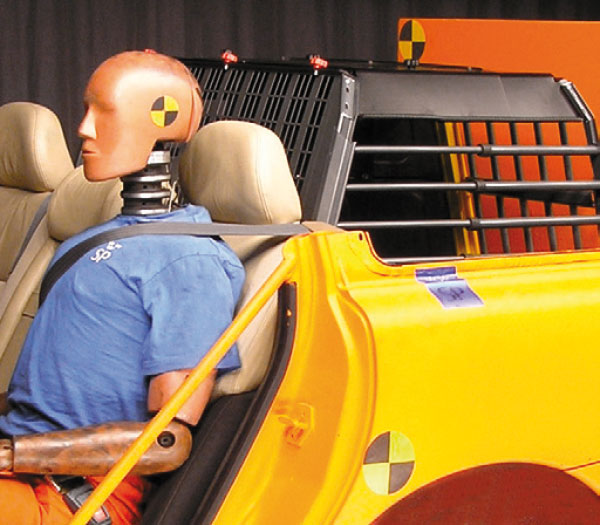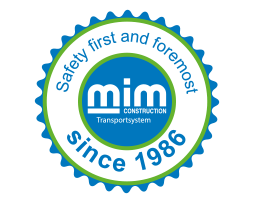
SPCT
Crash tests
Description of different crash scenarios
Frontal Collision
Most of the time, for almost all accidents, at least one of the vehicles is subjected to a frontal collision.
Frontal collision can mean a very fast stop. A loose dog keeps traveling forward and stops violently against what is in front of it. If placed in the cargo compartment, it can travel over the seat back and further into the car. If it sits in the back seat it can indeed travel through the front window and further into the object that you are crashing into. It is important to make sure that the dog can not travel on without restrictions.
Rear End Collision
A typical collision in queue situations. May be extensive on high speed roads and dense traffic.
The Rear End Collision. The dog is located close to the intruding tailgate if it is placed in the cargo compartment. It is good to have another deformation zone between the dog and the tailgate (the back end of our cage for example). Most often, the velocity change is not very high compared to the frontal collision case. The dog can escape out of the car afterwards if it does not have the rear window to restrain it. The risk is that it tries to escape from the chaos and disappears into traffic. (High risk of being hit by traffic later if it is not found).
Side Collision
Sometimes end up in a roll over.
The side impact is most dangerous if it tears the car open in any way. On a station wagon, the tailgate opens easily if it is hits in the rear fender. The dog is thrown out immediately if it is loose in the cargo area. To be protected from being thrown out through open windows or gaps it should have additional protection like a cage or harness.
Roll Over
The car rolls around the roof. Usually no violent forces but bumps in all directions.
Roll Over. The car rolls over the roof. Often causes the windows to break. Actually, the fall height is usually relatively low and thus the level of violence is, as long as you do not hit anything else that stops the car abruptly. The risk here is definitely that the dog is completely or partially thrown out and gets crushed under the car during rolling. It is important that the dog’s protection withstands all the different force directions it is exposed to during a roll over. Variocage provides 360 degree protection against dangers from all directions.
